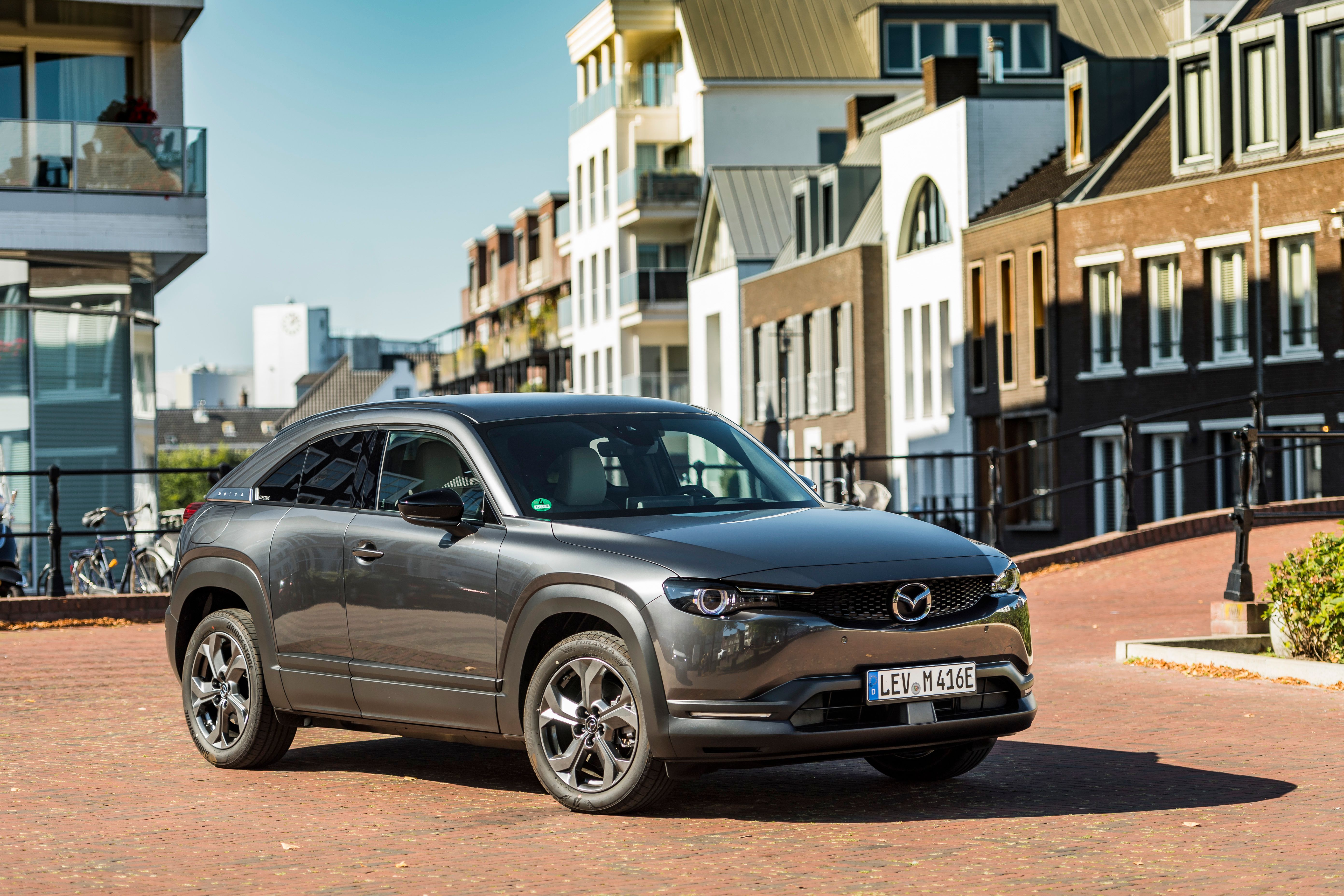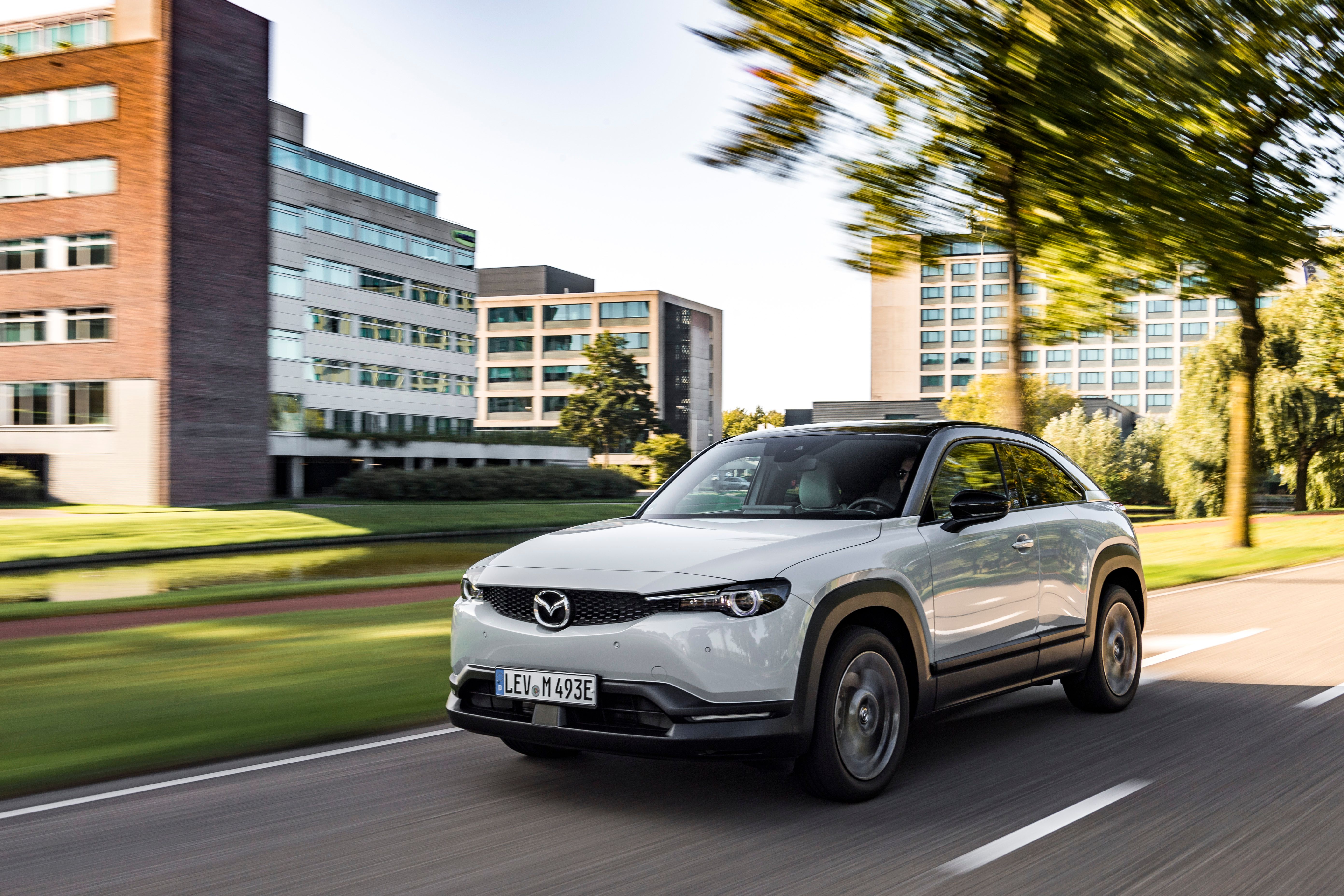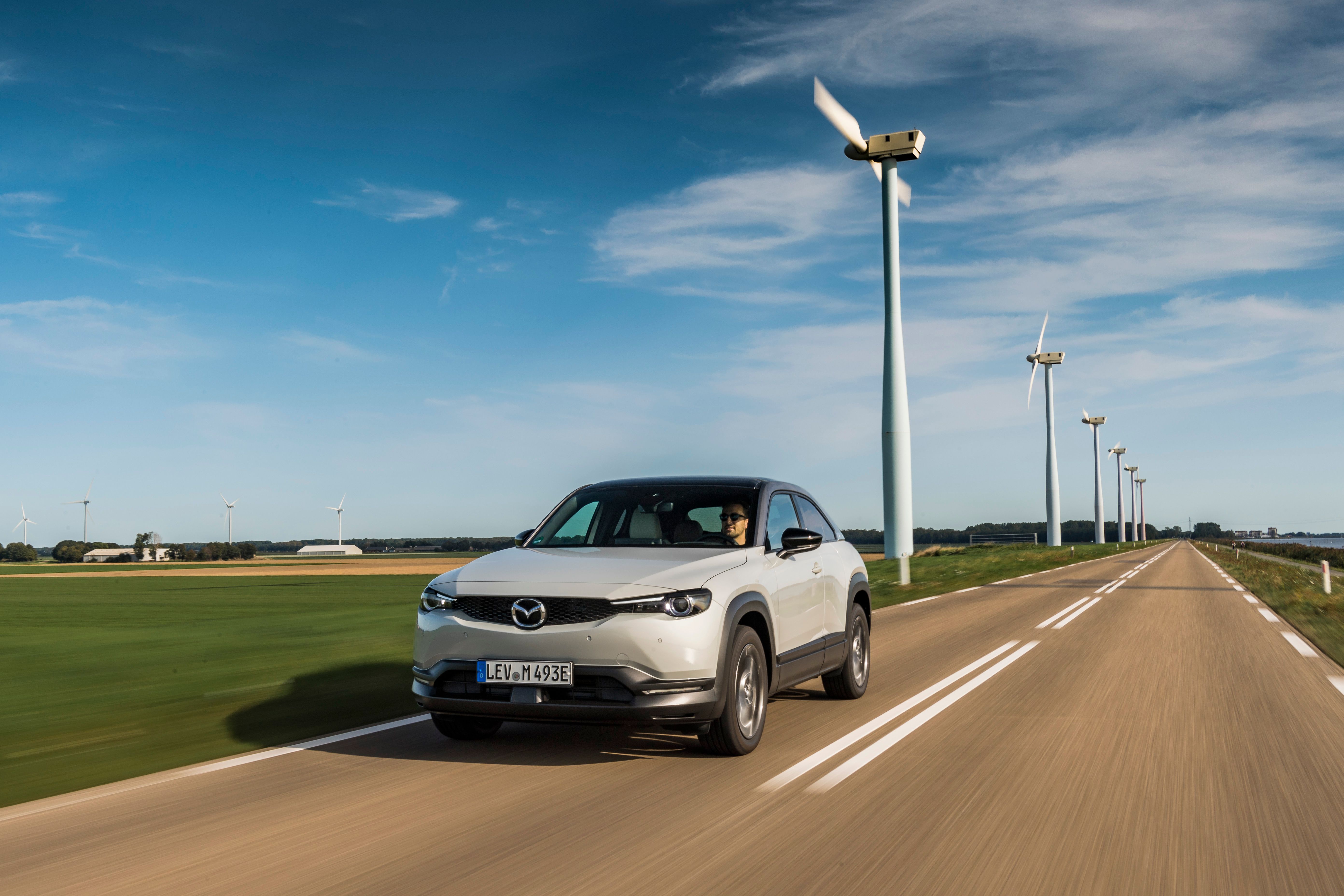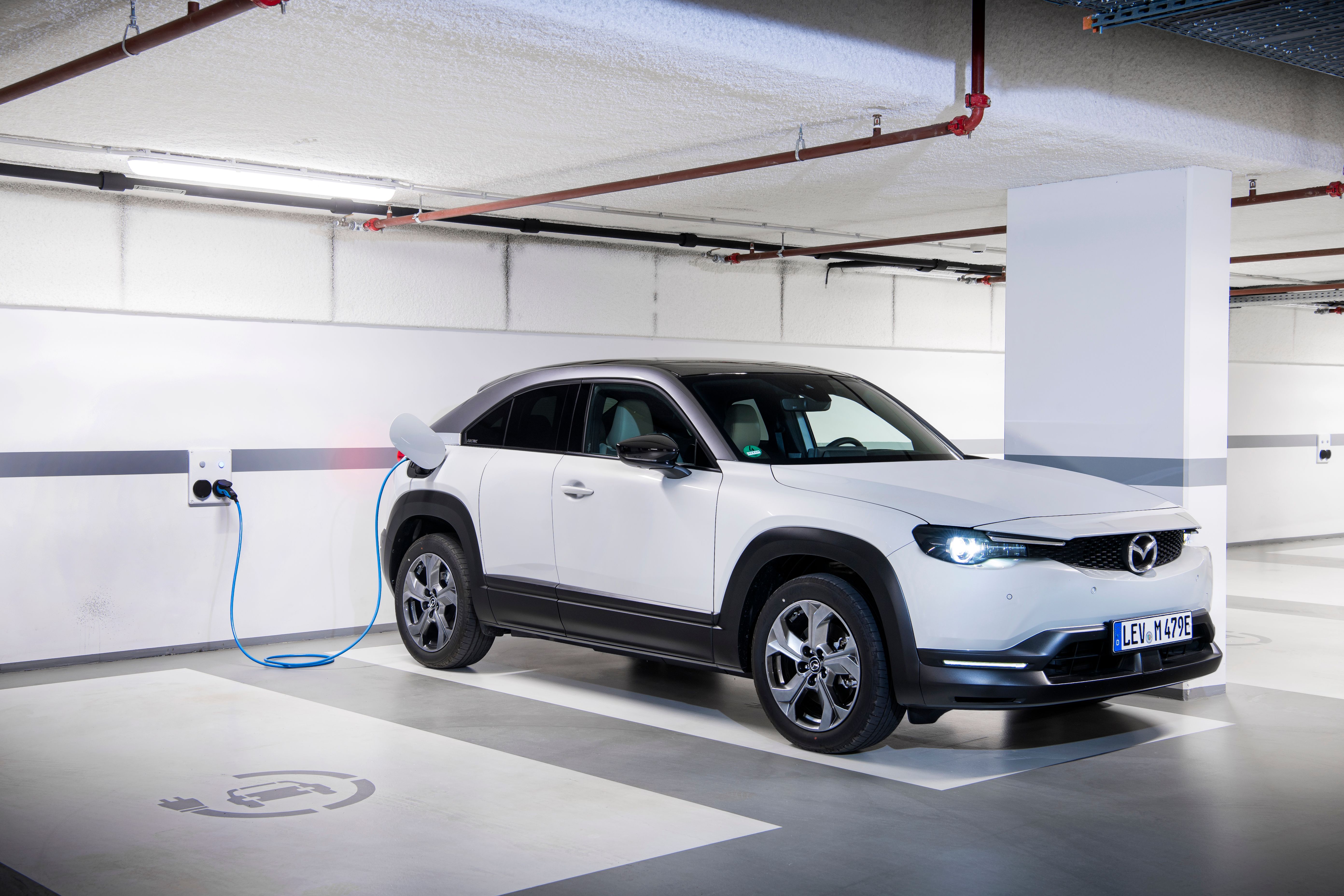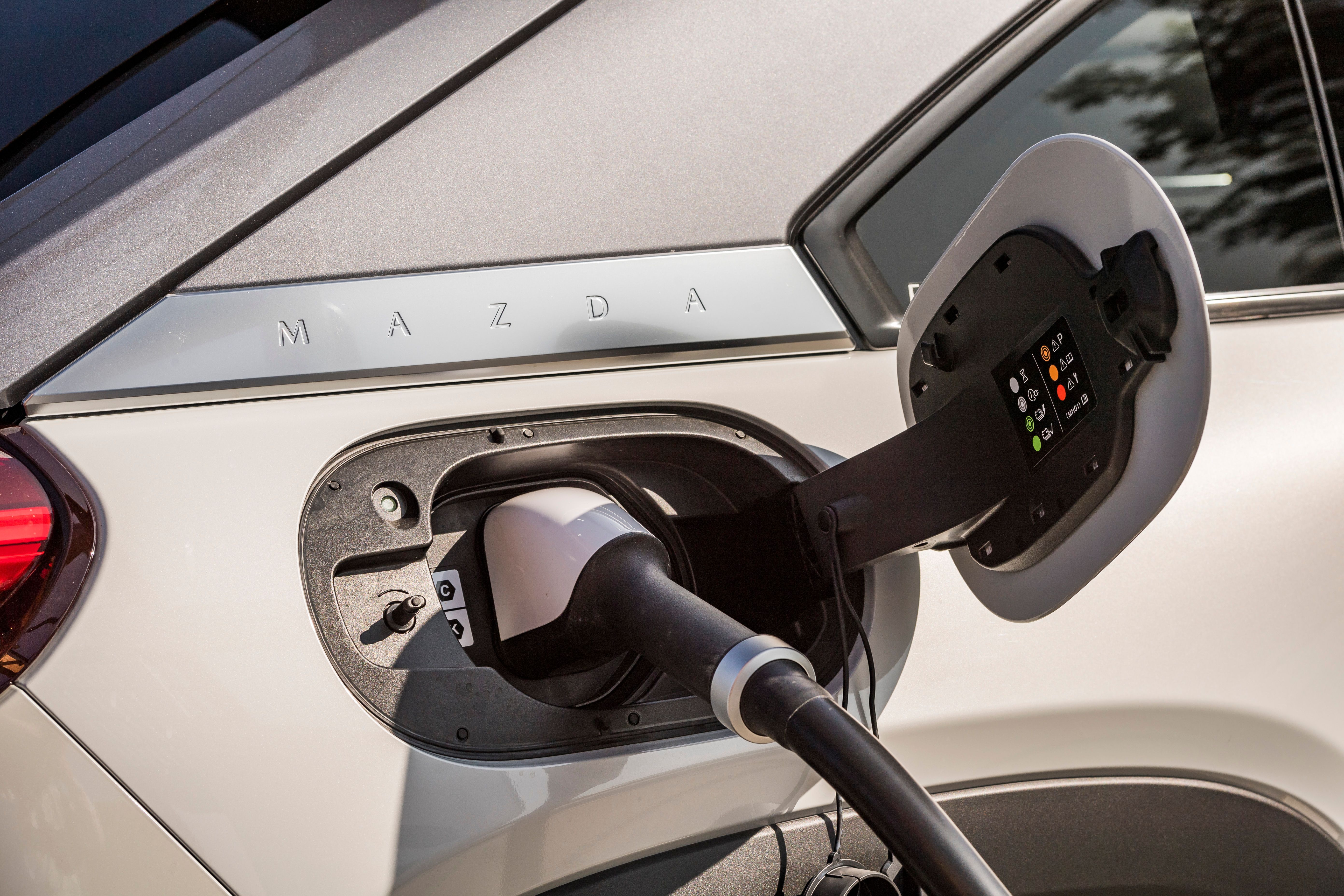Mazda has been talking about reviving the rotary engine for several years now and back in 2018 it confirmed that it's finally on its way back into a production model. Come 2020 and the Japanese automaker confirmed that it will offer a rotary engine in the Mazda MX-30. However, it won't be the sole provider of power, but a range extender on the electric version of the said crossover.
Mazda's new rotary engine will become available in 2022
The Japanese carmaker confirmed the return of the rotary engine in a video streamed on its official YouTube channel. The footage is in Japanese, but if you turn on English subtitles you'll see company CEO Akira Marumoto talk about it from the 7:34-minute mark.
He also mentions that the goal is to introduce a production version of the MX-30 with a rotary engine in 2022. However, this is supposed to happen in Japan only at first and there's no word if the rotary-powered MX-30 will be sold in Europe or the United States.
Mazda did not reveal any specs, but we know from the past that Mazda's aim is to produce a very compact unit with a high power output. It's also supposed to be much smoother than a gasoline engine, which is to be expected from this layout. The new rotary engine will be used as a range extender for the all-electric MX-30 and not as the sole source of power, so we're not looking at a product similar to the RX-8.
Also called freestyle doors, they are reverse-hinged rear doors that are notably smaller than regular doors. While they enable easier access to the rear seats, they keep the MX-30's wheelbase short and allow for a sportier, coupe-style roof. The fact that the MX-30 is Mazda's choice for a rotary engine revival is not a coincidence.
The Mazda MX-30 is already available as a hybrid and EV
Put into production in 2020, the MX-30 is a compact crossover that shares some architecture elements with the CX-30 and Mazda3, the company's other compact vehicles. But the MX-30 looks unique on the outside thanks to its freestyle doors, sleek roofline, and sporty front fascia. The MX-30 is only available in Japan for 2020, but it will go on sale in Europe in 2021. It's available with two different drivetrains: an all-electric version with the new e-SkyActiv powertrain and a mild hybrid that incorporates a 2.0-liter SkyActiv-G four-cylinder gas engine.
Mazda MX-30 electric specifications
|
Battery |
35.5kWh lithium-ion |
|---|---|
|
Horsepower |
141 HP |
|
Torque |
195 LB-FT |
|
Range |
130 miles |
The upcoming rotary engine will be fitted into this model as a range-extender, which will turn the MX-30 into a full-fledged hybrid. The mild hybrid variant, which combines a 2.0-liter four-cylinder and a 24-volt e-motor, comes with 143 horsepower on tap.
Mazda's extensive use of Wankel rotary engines
Mazda was among the first companies to use a rotary engine in a production car. It all started in 1961, when the Japanese car maker signed a deal with German carmaker NSU to develop the Wanker engine for passenger automobiles. NSU was the first to roll out a car, the Spider, in 1964, while Mazda followed in 1967 with the Cosmo sports car. The Cosmo was discontinued in 1972, but a second-gen model arrived in 1975 with a rotary alongside traditional engines. The rotary was also offered in the third-gen Cosmo, also known as the 929 in some markets, until 1989. The Mazda Familia, also known as the 323 and Protege, was another that briefly featured rotary engines in the late 1960s. The Savanna coupe, also known as the RX-3 in export markets, also featured a Wankel Rotary during most of the 1970s.
But the RX-7 is by far the most iconic Mazda equipped with a rotary unit. The nameplate debuted in 1978 with a 1.1-liter engine that was eventually turbocharged in the 1980s. The second-gen model (1985 - 1992) was also powered by rotary engines exclusively and saw the introduction of new turbo powerplants. The iconic third-generation RX-7 arrived in 1992 with the famous 13B-REW, the first mass-production sequential twin-turbo, under the hood. The 1.3-liter rotary was improved over the year to the point where it generated 276 horsepower and 231 pound-feet of torque. The beloved RX-7 was discontinued in 2002, but the rotary-powered Mazda returned in 2003 as the RX-8. Featuring a new Renesis rotary good for up to 245 horsepower, the RX-8 remained in production until 2012. Sales of the RX-8 ended in Europe in 2010 after failing to meet the then-new emission standards.
Racing success
Mazda also developed a few successful rotary race cars. The Mazda RX-7 won the INSA GTU series championship seven years in a row from 1979 and the GTO championship ten years in a row from 1982. The race-spec RX-7 also fared well in racing series in Europe and Australia. Mazda also developed a Group C prototype race car, the 787 and its derivative the 787B. The car debuted in Japan in 1990, but Mazda also raced it in the more prestigious World Sportscar Championship in 1991. Although it finished the season in fifth place overall, the 787B ran by Mazdaspeed went on to win the 24 Hours of Le Mans, the only car with a rotary engine to do so. On its way to victory, the 787B defeated iconic race cars like the Jaguar XJR-12, Mercedes-Benz C11, and the Porsche 962C.

